Near the entrance of Arlington National Cemetery, there is the grave of a senior British officer from World War II, marked by a large equine statue.
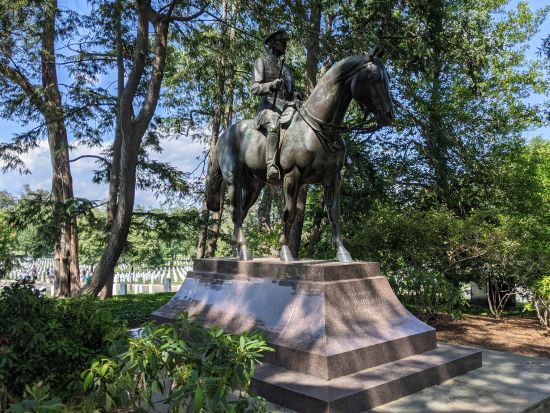
Who is Field Marshal Sir John Dill, and why is he buried at Arlington?
Dill and Gen. George Marshall worked closely together in Washington, D.C., during World War II. Their professional lives were parallel in many ways, so it is not surprising that the two senior officers got along very well.
John Dill was born in Ireland, a year after George Marshall. His college education was similar to Marshall’s, as Dill attended the British military college Sandhurst, while Marshall attended the Virginia Military Institute, and both commissioned into their armies after graduation.
Dill was promoted faster than Marshall, to captain in 1911 (Marshall made captain in 1916), and he attended British Staff College just after Marshall attended the School of the Line at Fort Leavenworth.
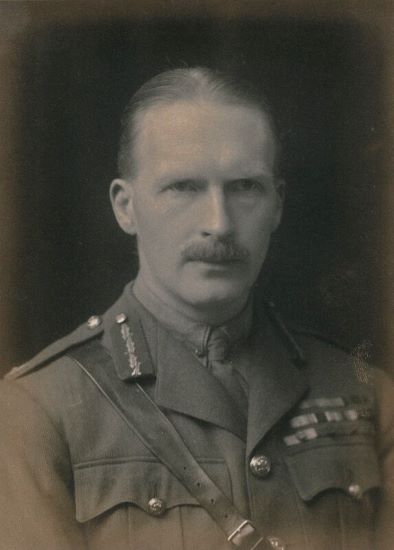
Brig. Gen. Dill in 1920. Photo from the National Portrait Gallery, UK.
In World War I, Dill rose to the rank of brigadier general and worked in the British General Headquarters Operations Section; Marshall worked in G-3 (Operations) in the American Expeditionary Force headquarters.
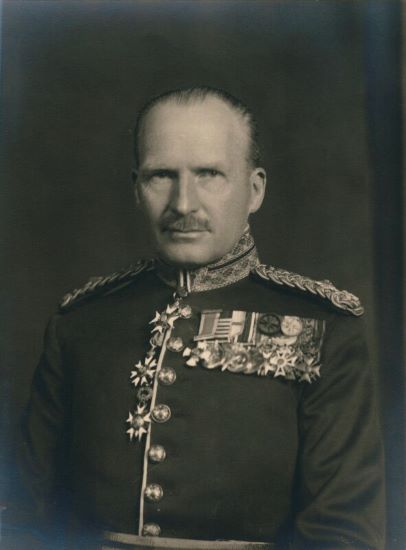
Dill as the commandant of the British Staff College, at the time Marshall was assistant commandant at the U.S. Infantry School.
In the interwar years, Dill served overseas in India and Palestine, and as Commandant of the British Staff College. He was knighted in 1937. Dill was promoted to four-star general in October 1939, about the same time Marshall was.
Dill and Marshall first met at the Atlantic Conference off Newfoundland in the summer of 1941. The two men had an immediate rapport, although you wouldn’t know that from their first photo together.
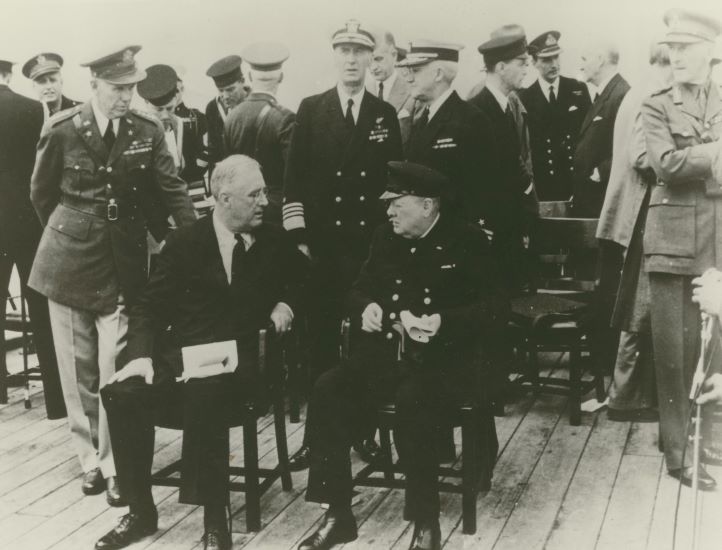
Marshall far left, and Dill, far right at the Atlantic Conference
When Dill returned to England after the conference, he demonstrated the beginning of their close working relationship when he wrote Marshall “I sincerely hope that we shall meet again before long. In the meantime we must keep each other in touch in the frank manner upon which we agreed.”
In December 1941, Dill was posted to Washington, D.C., as the leader of the British Joint Staff Mission and worked during World War II as Senior British Representative of the newly created Combined Chiefs of Staff.
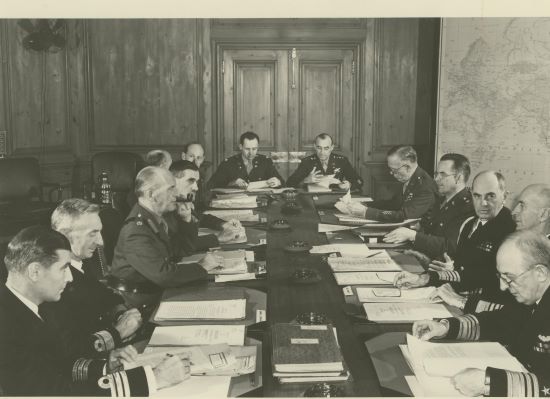
Combined Chiefs of Staff meeting. Dill is left holding a pipe. Marshall is back right looking at papers.
In 1941, the Marshalls hosted the British delegation for Christmas dinner. On Christmas Eve, Katherine Marshall discovered that Dill’s birthday was on Christmas, and sent Master Sgt. Powder, Marshall’s driver, to find a bakery in D.C. that was open to purchase a cake to celebrate.
Dill and Marshall traveled together extensively in May and June 1942, as U.S. forces prepared to travel overseas to fight. They visited troops training in many locations.
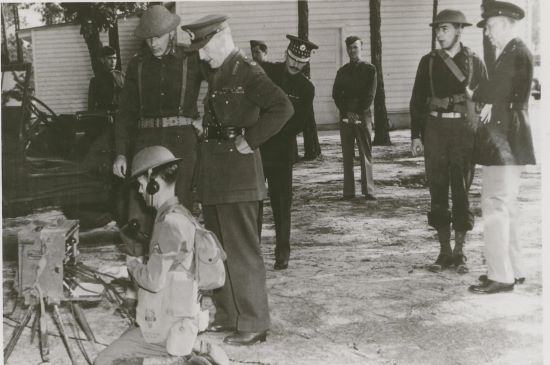
Dill and Marshall watch communications training at Camp Blanding, FL, in May 1942.
There were several trips to view the new airborne troops at Fort Bragg, NC, one with Prime Minister Churchill.
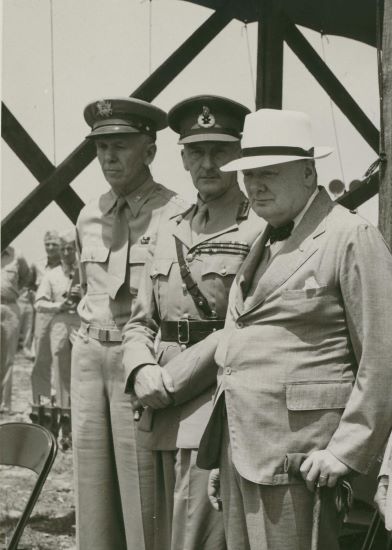
Marshall, Dill, and Prime Minister Churchill watching airborne soldier demonstration at Fort Bragg, NC, in June 1942.
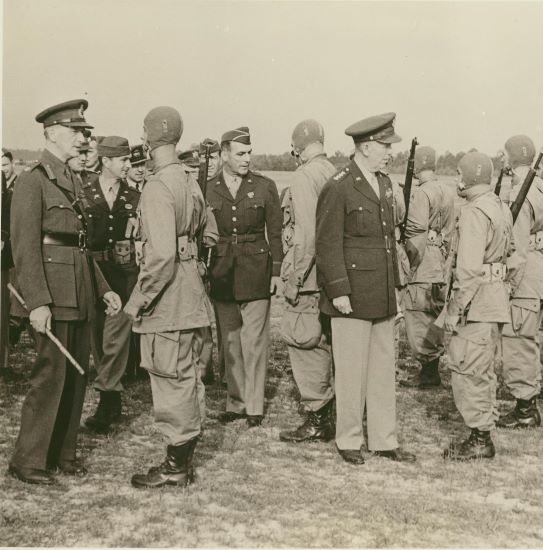
Marshall and Dill talking with soldiers from the Parachute Test Platoon at Fort Bragg.
They also traveled to the Allied conferences held throughout the war.
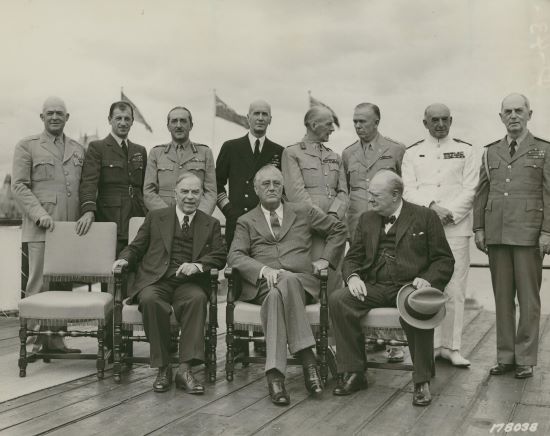
The Quebec Conference in August 1943. Dill and Marshall couldn’t stop talking long enough for a group photo.
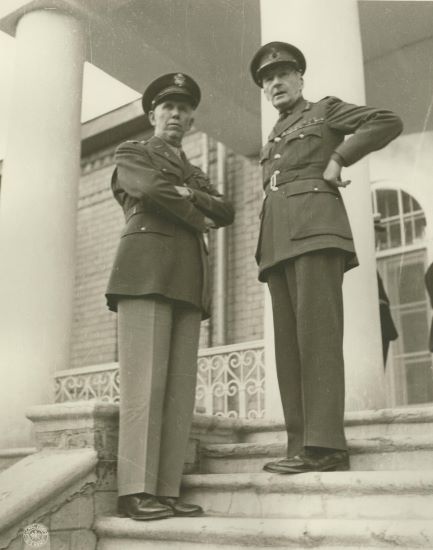
Dill and Marshall at the Tehran Conference in November 1943. Churchill was displeased with Dill at the time and didn’t invite him, so Marshall brought Dill to the conference.
Dill and Marshall grew to trust each other such that when Dill received communications from British Prime Minister Churchill asking Dill to assess Marshall’s opinion about a topic, Dill would bring the message to Marshall and ask “how are we going to answer it?”
In the summer of 1944, Dill was diagnosed with aplastic anemia. He chose to stay in D.C. and work as long as possible, not return home to England. He died Walter Reed Hospital November 4, 1944. His funeral was held in the Washington National Cathedral, and Marshall obtained special permission for Dill to be interred at Arlington National Cemetery, the highest-ranking foreign officer to be given that honor.
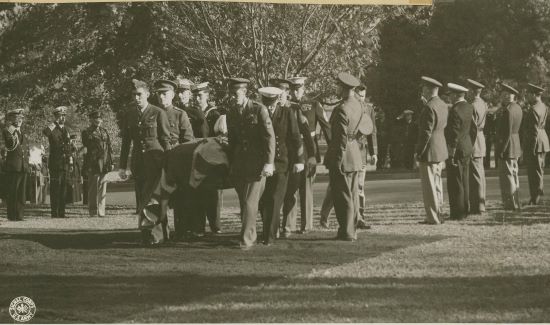
Dill’s funeral at Arlington National Cemetery.
Marshall was devastated by Dill’s death. He wrote to Lady Nancy Dill that “I know that it is not necessary for me to tell you of my distress of mind at this moment. Officially the United States has suffered a heavy loss, and I personally have lost a dear friend, unique in my lifetime, and never to be out of my mind.”
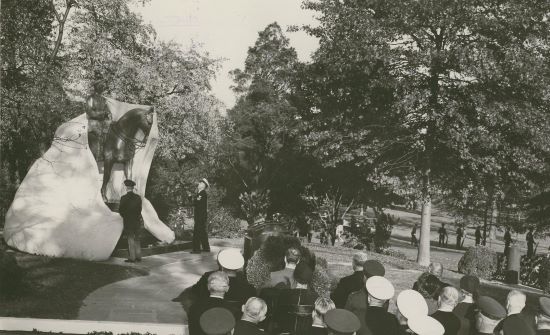
Six years later, Marshall participated in the dedication of an equestrian statue of Dill at his gravesite. It is one of two equestrian statues at Arlington. In his speech at the dedication, President Truman said of Dill:
He was a great Englishman, with a breadth of wisdom and a depth of understanding that transcended the boundaries of his own country.
The purity of his character, the directness of his purpose endeared him to all his American associates and inspired a real devotion to him and a complete trust in him. And that is the greatest thing that can come to any man, when he is completely trusted by his associates. We need more, these days, of that same high integrity–men who can command respect by their honesty and the sincerity of their purpose.
Marshall later told his biographer, Dr. Forrest Pogue, “the relationship between Dill and myself covered a long period of time and a very intimate understanding of each other.” It was a working relationship and friendship not replaced.
Melissa has been at GCMF since fall 2019, and previously was an academic librarian specializing in history. She and her husband, John, have three grown children, and live in Rockbridge County with three large rescue dogs. Keep up with her @MelissasLibrary.
